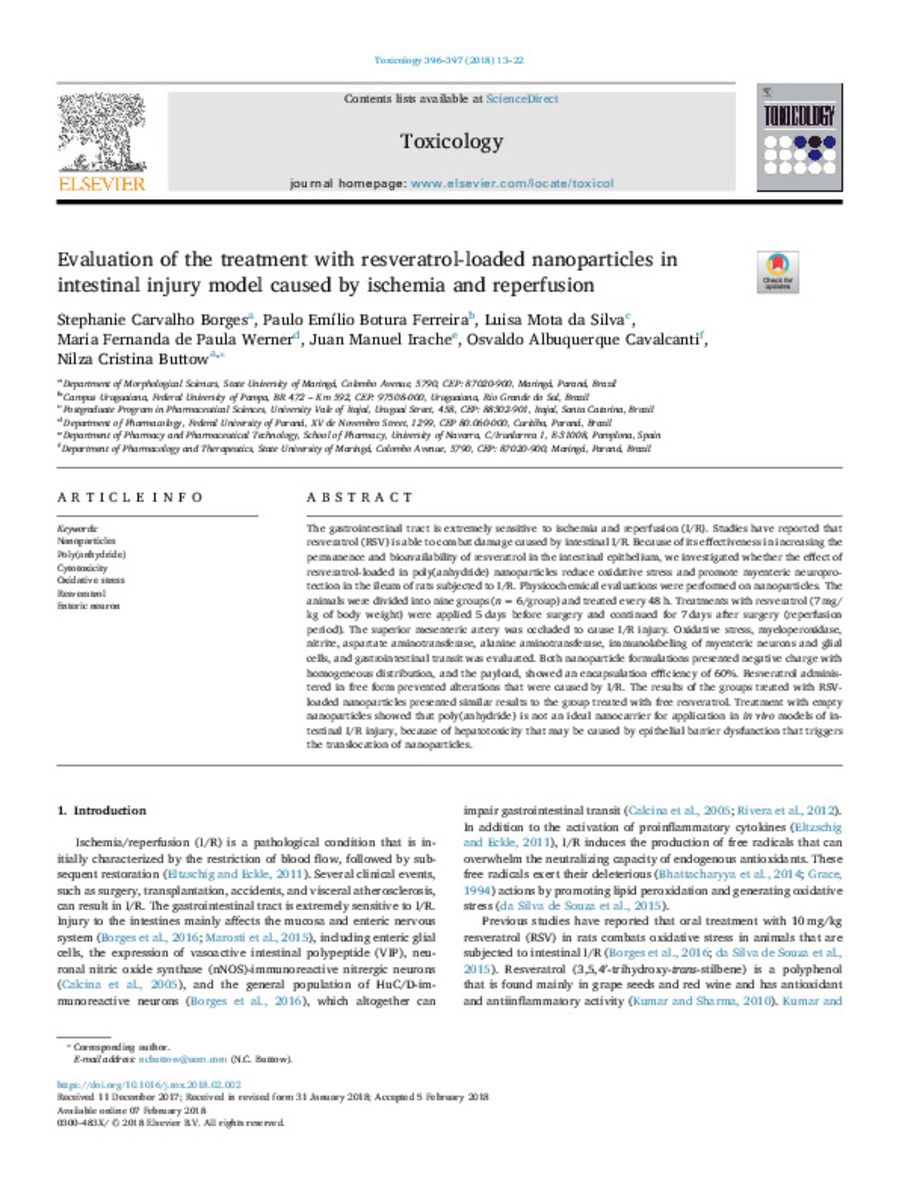Evaluation of the treatment with resveratrol-loaded nanoparticles in intestinal injury model caused by ischemia and reperfusion
Keywords:
Nanoparticles
Poly(anhydride)
Cytotoxicity
Oxidative stress
Resveratrol
Enteric neuron
Citation:
Carvalho-Borges, S. (Stephanie); Botura-Ferreira, P.E. (Paulo Emilio); Mota-da-Silva, L. (Luisa); et al. "Evaluation of the treatment with resveratrol-loaded nanoparticles in intestinal injury model caused by ischemia and reperfusion". Toxicology. 396, 2018, 13 - 22
Statistics and impact
0 citas en

0 citas en

Items in Dadun are protected by copyright, with all rights reserved, unless otherwise indicated.










